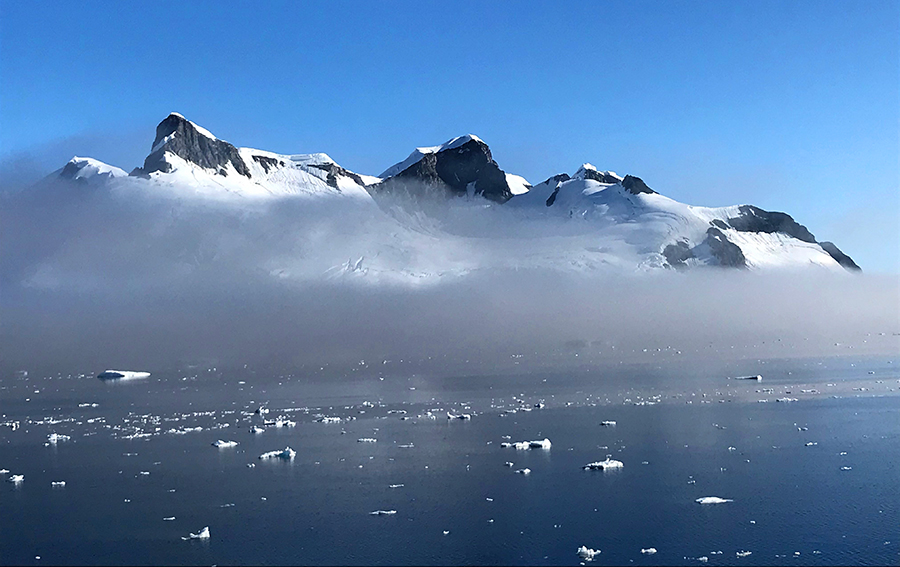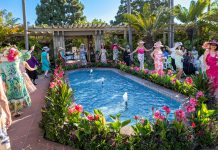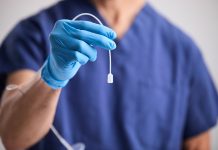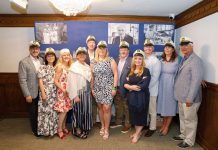Editor’s Note: Newport Beach resident Richard Simon is a regular contributor to the NB Independent.
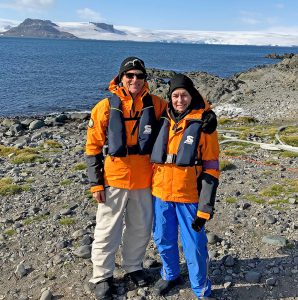
The February day that my wife, Katherine, and I left Newport Beach to fly out of LAX to Santiago, Chile, en route to an Antarctic cruise, grocery store shelves were fully stocked, and businesses were enjoying, in President Trump’s words, historical profitability.
We, and the 400 other passengers from around the world who boarded the Seabourn “Quest,” needed to only think about what to request at the next bountiful meal, what unmatched scenery we could photograph, what new friends we would make, what time we had to wake from our naps, and ponder tomorrow’s comfortable routine. After all, isn’t that part of what cruising is all about?
As we plowed beyond Cape Froward, Chile, the most southern point of the South American mainland, we entered rather calm seas – calm, that is, for the Southern Ocean, that 600-mile stretch between the aforementioned cape and the Antarctic Peninsula, where no land mass inserts itself to block the winds and currents.
On most days ship-tossing chaos prevails, but our passage, fortunately, was almost lake-like, with only 15-20-foot seas causing mild lifting and falling. Our challenges were to develop our sea legs, look for whales, and see who would be first to spot ice bergs.
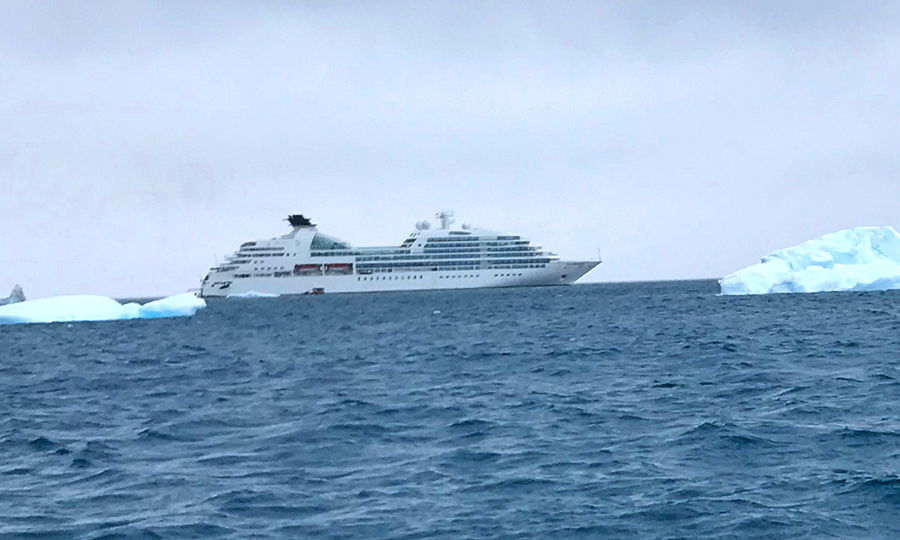
For whatever reasons, the whales were few, but the icebergs loomed often and large, glaringly white mega-monsters that could ruin the day of any mariner not keeping watch. Thank goodness for radar and watchful seamen on the bridge, especially at night and in the frequent, zero-visibility fogs.
The morning the ship awoke off the first glacier-capped islands announcing the Antarctic Peninsula, you could immediately feel the isolation of this unoccupied, 1,500 mile stretch of land – unoccupied except for a few scientific research stations perched on bay-sheltered, rocky prominences.
Except for the motions of the ship, and the life aboard, this frigid world was mostly silent, save for the active bird life, occasional cracking glaciers, and sounding and spouting whales.
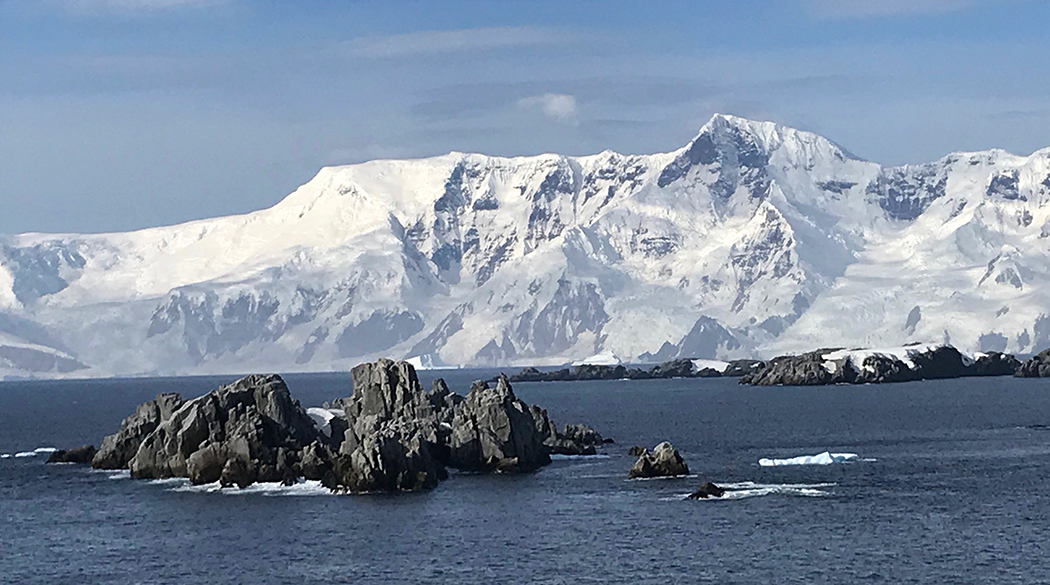
Scientists say that the glaciers are melting. Most of us expected to see barren mountain ranges. This was not the case on our itinerary. Although there were bare sections of mountains, the glaciers were huge, intimidating in size and sweeping the vistas. Penguins were plentiful and comical, seemingly unmoved by our presence. Seals sleeping on the rocky shores or on ice flows could not care less about the snapping cameras or orange coat–clad tourists that invaded their space.
After six days in 29-degree temps, our schedule dictated we head north, again (amazingly) across a placid Drake Channel up to the British-owned, South Atlantic outpost called the Falkland Islands.
Referred to as the Malvinas by the Argentines, the islands number some 800 barren up-thrusts sparsely occupied except by 2,500 Brits, mostly in Stanley, as well as tens of thousands of sheep; and countless birds of many types, including several species of penguins.
Midway to our next port of call at Montevideo, Uruguay, the captain made an emergency announcement: all South American countries’ borders were closed due to the Coronavirus, and that our cruise would end there. Cops on the dock assured that neither passengers nor crew could step ashore. We were 21-days and 2,000 miles short of our intended destination in Manaus, Brazil. Authorities allowed our ship to refuel and provision, but told it must leave immediately.
After some sensitive corporate negotiations with Argentina, we were told, the ship was allowed to steam to Buenos Aires, where we were given all of one hour to disembark for a bus ride to the airport.
Fortunately, while onboard, we called the emergency number for our travel agency, Altour. The booked us a last flight out to Panama, and a local hotel at which we could spend the night until our flight at 5:30 the next morning.
However, the van driver for the Holiday Inn Hotel near the airport said that the hotel wouldn’t let us in, unless we had proof that we had been in quarantine for two weeks. My argument to the hotel manager fell on proverbial deaf ears, even though I explained that we had been “quarantined” for nearly three weeks aboard ship in an area that was disease free.
This meant we would have to spend nearly 18 hours at the airport, among a seething mass of people trying to get home. That afternoon was spent watching Customs officers come and go, arresting people who tried to bypass entrance health checks.
The news continued to worsen. We heard that Panama had closed all entry points, including the airport, which meant our airline tickets were useless. So it was back to the cell phone that was low on power. Again, we called our travel agent, and told her our situation.
How she did it, we don’t know, but she found the last two seats on the last Argentine Airlines flight out of Buenos Aires, to Miami. We took off at 11 p.m. and landed in Miami, eight hours later, at 6:15 a.m. We then spent the next five hours wandering the halls of the airport along with hundreds of masked passengers before boarding a packed American Airlines flight to LAX.
We landed with overburdened suitcases, and bags under our eyes. To that point, we had been awake for nearly 38 hours.
As vibrant as our American cities had been prior to our truncated vacation, the environment had now shut down. Our limo ride home from LAX at 3 p.m. took 40 minutes—unheard of under normal circumstances.
Upon arriving home, my wife went shopping, but found mostly emptied shelves; she left with emptied spirits. Thankfully, our neighbors have volunteered to shop for us, since we are currently in self-quarantine for the next two weeks.
As we shed the jet lag, our new challenge is to adapt to the home-bound life. And to fix all those little things around the house that I’ve ignored for way too long. Seems like we have some time on our hands.
